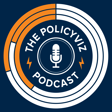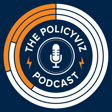
Max Kuhn Shows You How to Model Data in R
Max Kuhn is a software engineer at RStudio. He is currently working on improving R’s modeling capabilities and maintains about 30 packages, including caret. He was a Senior Director of Nonclinical Statistics at Pfizer Global R&D in Connecticut. He was applying models in the pharmaceutical and diagnostic industries for over 18 years. Max has a Ph.D. in Biostatistics. He, and Kjell Johnson, wrote the book Applied Predictive Modeling, which won the Ziegel award from the American Statistical Association, which recognizes the best book reviewed in Technometrics in 2015. Their second book, Feature Engineering and Selection, was published in 2019 and his book with Julia Silge, Tidy Models with R, was published in 2022.
Episode Notes
Website at RStudio: https://www.rstudio.com/authors/max-kuhn/
Twitter: https://twitter.com/topepos
Github: https://github.com/topepo
R Packages:
autoML
caret
Quarto
RMarkdown
tidymodels
tidyverse
Books from Max:
Tidy Modeling with R: A Framework for Modeling in the Tidyverse
Applied Predictive Modeling
Feature Engineering and Selection
R for Data Science: Import, Tidy, Transform, Visualize, and Model Data by Garrett Grolemund and Hadley Wickham
Related Episodes
Episode #225: Julia Silge
Episode #212: Dr. Cedric Scherer
Episode #210: Dr. Tyler Morgan-Wall
Episode #207: Tom Mock
Episode #150: Learning R
Episode #69: Hadley Wickham

